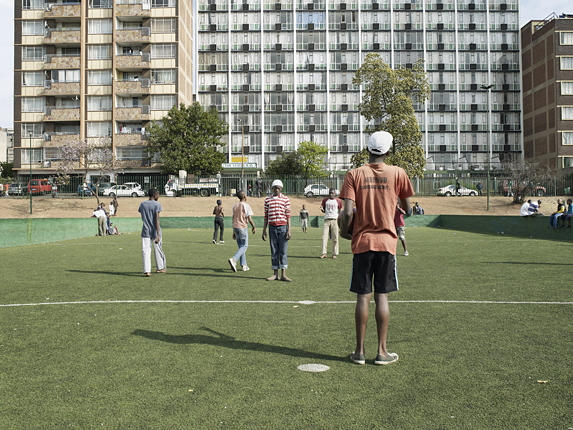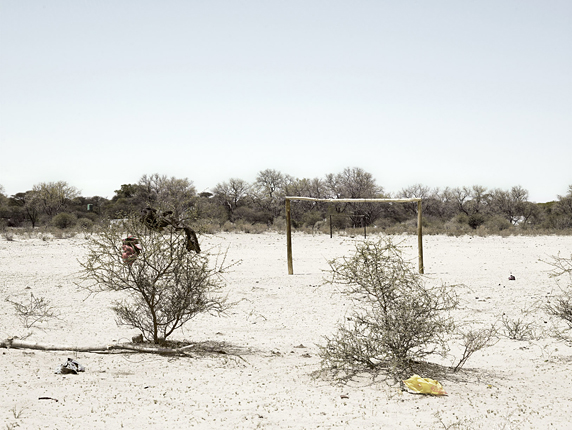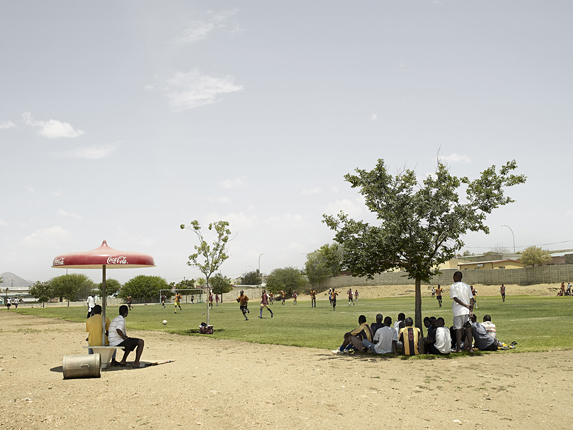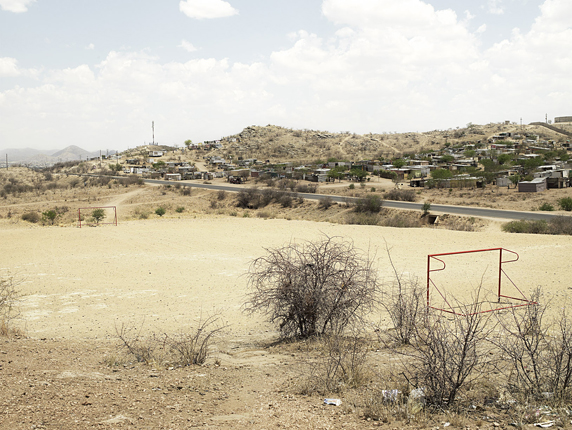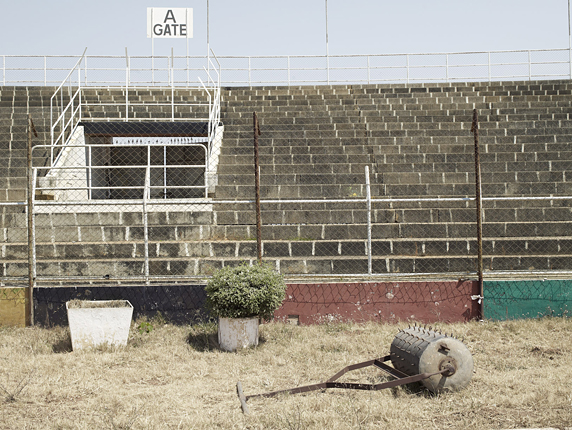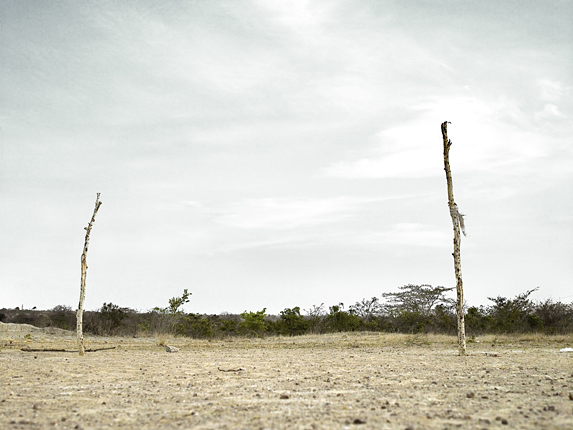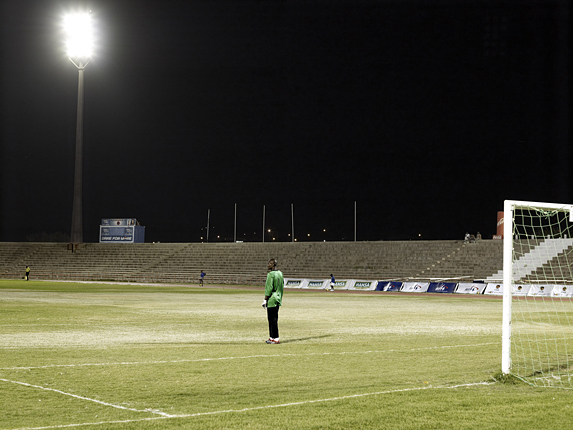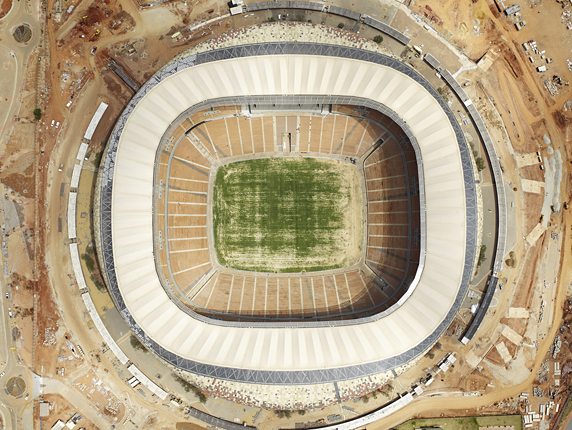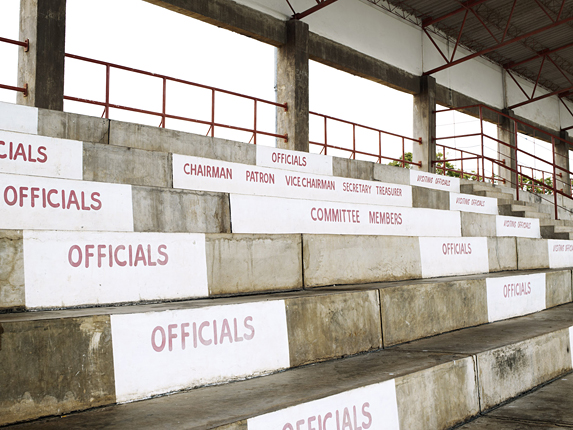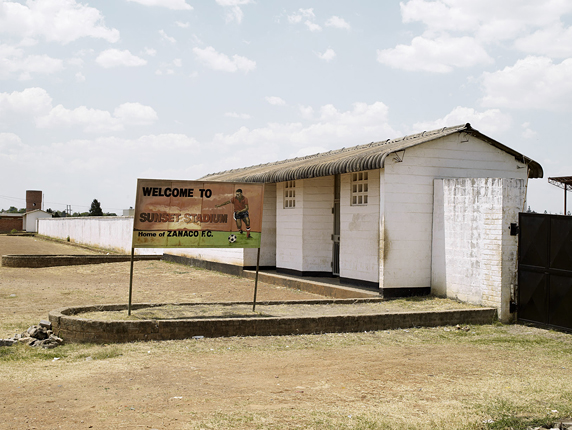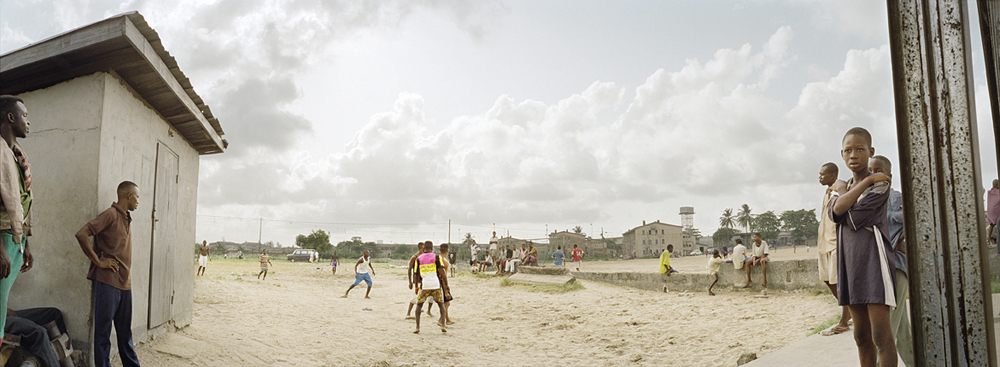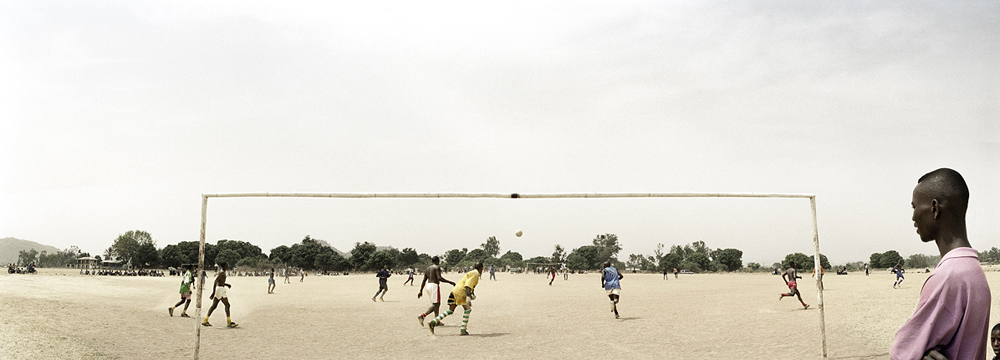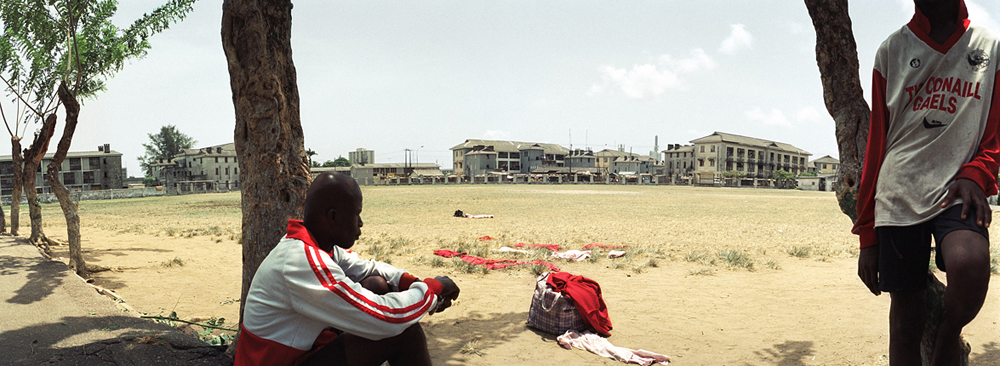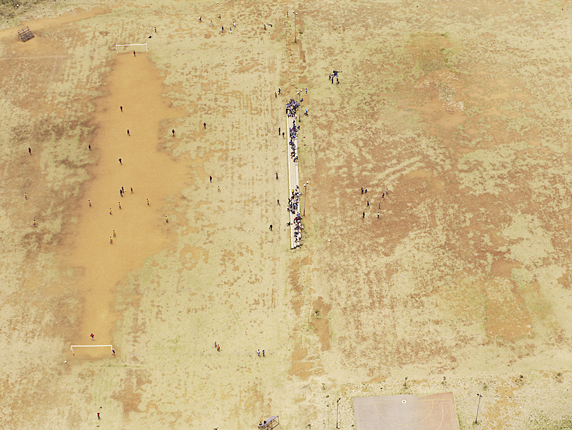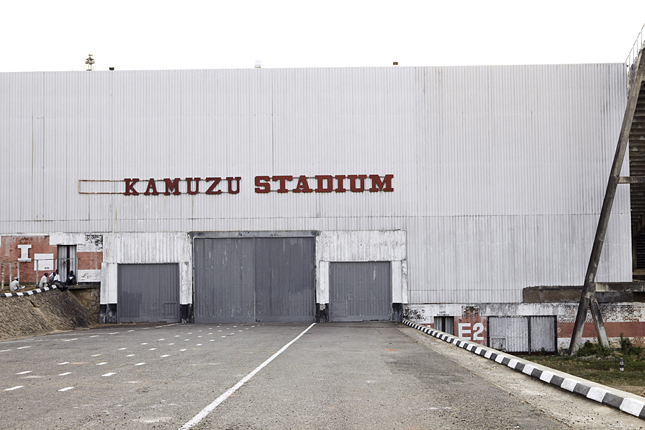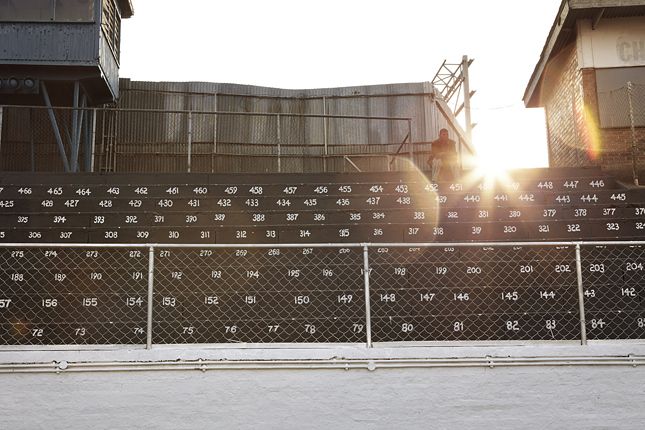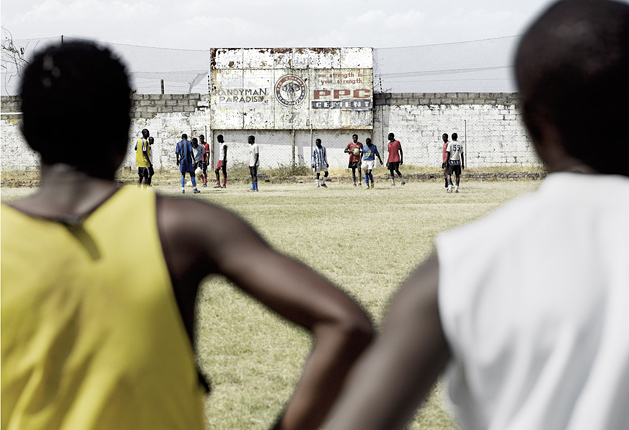I’ve always been fascinated by the aesthetics of sports. The first photos I ever took—in 1986, with a manual Pentax given to me by my mother’s boyfriend—were of a Formula 1 race at the famous Nuremburg ring course. Later, as a professional, I did extensive shoots of surfers and snowboarders.
Football, however, was something I came to late. In the Waldorf school I attended as a kid, football was not allowed—we couldn’t kick any object that resembled a human head. That delayed my exposure to ‘the beautiful game’, but gave it an added appeal—the appeal of the forbidden.
Then, about a decade ago, Playboy magazine asked me to go to Lagos with Jonathan Akpoborie—the Nigerian star then playing in the Bundesliga for VfB Stuttgart. The idea was to document the game as Akpoborie had lived it growing up in Nigeria’s sprawling former capital.
The Stuttgart forward was unable to make the trip at the last minute and instead arranged for one of his local drivers to show me around the city, taking me to places Akpoborie had played as a youth. On the first day—and I should add that I had been unable to secure a journalist’s visa on such short notice—the driver took me to a beautiful sand football pitch. As soon as I climbed out of the car, I noticed a water tower adjacent to the pitch and decided to climb it in order to get a few shots of the field from above.
Fifteen minutes later, two military jeeps screeched to a halt at the base of the tower. My film was confiscated, I was arrested, and—with no proper visa—I was immediately marched over to a nearby police station for questioning. Several hours into the detainment, one of the policemen realized that he and Akpoborie’s driver—who had gallantly come to my rescue—were distant relatives. Within five minutes the officer declared himself a huge football fan and I was released—with my film.
During the rest of the trip, I was amazed at the creative use of space in Lagos: In a city crammed with more than 15 million residents, football was played on practically every block, with fields shoehorned into even the tiniest open areas. Empty football pitches—with their infinite possibilities—have always had a particular fascination for me. I decided then and there to start shooting empty African pitches and to exhibit them side by side—viewers would be free to imagine their own games on them.
Over the next ten years, I would shoot football pitches in Nigeria, Namibia, Botswana, Zambia, Malawi, and South Africa. And though the focus always remained on the pitches—thus the title African Arenas, encompassing everything from sand lots to stadiums built for the 2010 World Cup—my initial concept quickly evolved.
Almost immediately—on that first trip—I realized how important it would be to document the way the game was played on these pitches. I wanted to show the life on and around these makeshift “arenas”. The motivation for my change in perspective was simple: almost everywhere I went, the players never showed the slightest interest in what I was doing, instead concentrating on their sport.
I’ll never forget coming across a few children playing football beneath a water tower on a stretch of road between Lusaka and Choma, in Zambia. They were playing with a ball stitched together from plastic bags. I stopped the car, got out, and began to assemble my gear. I set up my Contax on a tripod on the roof of the car and began to shoot. None of the kids cast even a glance at me, much less asked me what I was doing. It was clear that here football was all that mattered. And that, after all, is the way it is supposed to be.

